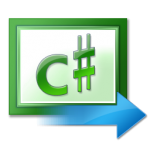Previously we discussed getting started with Ninject and dependency injection in general. In the getting started post, we introduced a fictitious example application. This application defined concrete implementation for the following interfaces: IFileSystem – Abstraction of file
Software Engineering Archive

Ninject – Getting Started, Resources, Basic Binding
This post will cover the information needed to get started with Ninject. By the end of this post, you will be able to use Ninject in your application as a dependency injector. Here is a description from

Dependency Injection and Inversion of Control Containers
In future posts, I plan on diving into Ninject 2. As I was writing that post, I found myself covering a lot of background material on dependency injection (DI) and inversion of control (IOC) containers. This is

An Event Based Cron (Scheduled) Job In C#
Wikipedia defines ‘cron’ as… “Cron is a time-based job scheduler in Unix-like computer operating systems. Cron is short for Chronograph. Cron enables users to schedule jobs (commands or shell scripts) to run automatically at a certain time

Monitored (Watchdog) Asynchronous Process in C#
I have a requirement that I need to know if a long running process is still alive or not. If a process is no longer alive (it is hung, crashed, or is in an infinite loop) then

Send Email Programmatically On GoDaddy
I have had a difficult time getting dasBlog to send emails on my GoDaddy account. I have not been able to figure out the configuration required to get it to work. I also wanted to have a

Application Logging – Effectively use a logging framework.
Why add logging to your application? At some point an application may require information to be logged. There are many reasons why you may want to add logging to your application. A few are: Exception, Error, Debug
